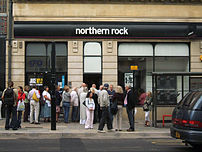FT.com / Columnists / Martin Wolf - Why Davos Man is waiting for Obama to save him: "Contrary to views expressed in some circles, notably in the US, depressions are neither good for us, nor unavoidable. What is needed is determined and globally co-ordinated action. The lead must come from the US: it remains the hyperpower; the economic system is one it promoted; and the crisis had much to do with mistakes its policymakers and private institutions made, even if aided and abetted by mistakes elsewhere.
So what are the principles to be followed? I suggest the following:
First, focus all attention on reversing the collapse in demand now, rather than on the global architecture.
Second, employ overwhelming force. The time for “shock and awe” in economic policymaking is now.
Third, make future normalisation of fiscal and monetary policies credible.
Fourth, act in concert. Even the US cannot solve its problems alone.
Fifth, avoid protectionism.
Sixth, strengthen the ability of global institutions to help the weaker."

![Reblog this post [with Zemanta]](http://img.zemanta.com/reblog_e.png?x-id=e0915914-a93b-45d0-9168-b936f1bf5144)
![Reblog this post [with Zemanta]](http://img.zemanta.com/reblog_e.png?x-id=273e7a7b-4459-4ff6-9616-1aabb3cc4655)

![Reblog this post [with Zemanta]](http://img.zemanta.com/reblog_e.png?x-id=1565f93a-7766-4d77-8421-a97199928ad2)

![Reblog this post [with Zemanta]](http://img.zemanta.com/reblog_e.png?x-id=12a87435-a071-400c-b34b-fbf2c2bc8688)

![Reblog this post [with Zemanta]](http://img.zemanta.com/reblog_e.png?x-id=017e5607-8a20-4760-9937-32546de8c98d)

![Reblog this post [with Zemanta]](http://img.zemanta.com/reblog_e.png?x-id=9ee00349-3979-4dd1-ba6c-5e73071196a3)

![Reblog this post [with Zemanta]](http://img.zemanta.com/reblog_e.png?x-id=2735be46-e8e5-4e11-b2c4-89c5d8a4b0db)
![Reblog this post [with Zemanta]](http://img.zemanta.com/reblog_e.png?x-id=fe3337f7-d850-4c21-8d75-bb10d862cb2f)

![Reblog this post [with Zemanta]](http://img.zemanta.com/reblog_e.png?x-id=a9f02bfc-4c21-4d44-9870-d60abdcc4f41)

![Reblog this post [with Zemanta]](http://img.zemanta.com/reblog_e.png?x-id=25ec0254-723d-4d3d-b77e-ebf814a20ad9)

![Reblog this post [with Zemanta]](http://img.zemanta.com/reblog_e.png?x-id=4db70ea5-7e26-469d-a0de-3d985b018fd0)

![Reblog this post [with Zemanta]](http://img.zemanta.com/reblog_e.png?x-id=b5b30081-6b60-44e4-a40d-d63bf87208ea)

![Reblog this post [with Zemanta]](http://img.zemanta.com/reblog_e.png?x-id=fbc37780-dc04-4bd8-91b6-eab3784defe9)

![Reblog this post [with Zemanta]](http://img.zemanta.com/reblog_e.png?x-id=cc112672-f932-4099-95e6-66df1ccc37fd)

![Reblog this post [with Zemanta]](http://img.zemanta.com/reblog_e.png?x-id=ceb2108d-d482-4bec-8527-e7bb203344ee)

![Reblog this post [with Zemanta]](http://img.zemanta.com/reblog_e.png?x-id=a0dec29f-fff6-469a-9a39-c2b7176dd424)

![Reblog this post [with Zemanta]](http://img.zemanta.com/reblog_e.png?x-id=876413c7-d293-4f4b-830e-3ed69249ec83)

![Reblog this post [with Zemanta]](http://img.zemanta.com/reblog_e.png?x-id=2d659532-dee9-4002-a2f7-76dbe8285497)


